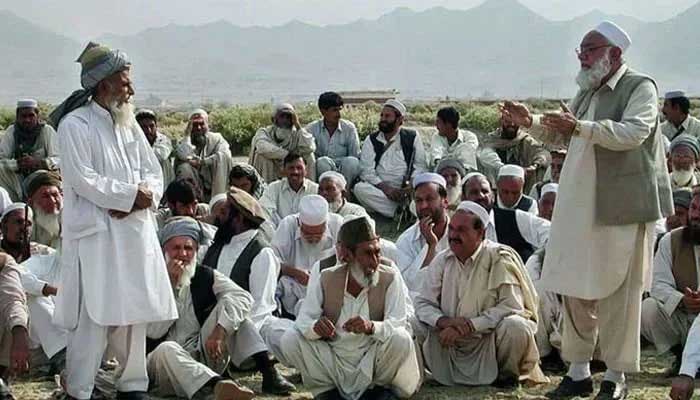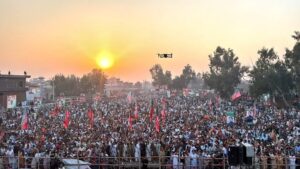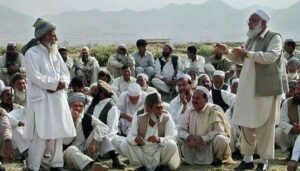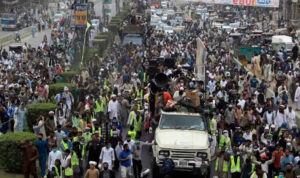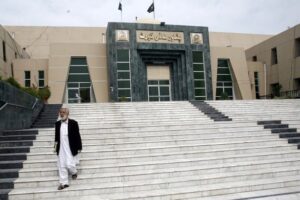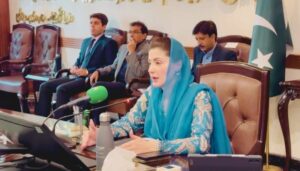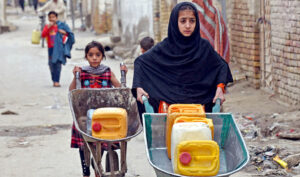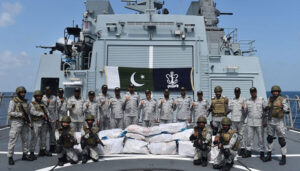Chief Minister Sohail Afridi’s decision to convene the Khyber Peace Jirga on 25 October in Bara has stirred cautious optimism across Khyber Pakhtunkhwa.
The announcement, framed as a step toward reconciliation, evokes both hope and skepticism in a region that has endured decades of conflict, displacement, and uncertainty.
The jirga, an age-old mechanism rooted in Pashtunwali, stands as a symbol of collective wisdom — a council where disputes were once settled through dialogue, not bloodshed. It was through such a jirga that Ahmad Shah Abdali was chosen as the king of the Pashtuns, cementing a tradition that valued consensus over coercion. For generations, jirgas maintained social balance, restored honour, and prevented feuds from turning into wars.
Also Read: Khyber Aman Jirga Must Include Women, Says KP Women’s Commission
But that tradition, once revered, began to erode when militancy and extremism swept through the tribal belt. The social fabric of Pashtun society — bound by mutual respect and communal justice — gradually frayed under the weight of ideology, guns, and foreign agendas. The people of Khyber, like much of the region, found themselves trapped between militant dictates and military operations, yearning for a peace that remained elusive.
The Khyber Peace Jirga now attempts to reclaim that lost equilibrium. Chief Minister Sohail Afridi envisions it as a platform for unity — a forum where grievances can be heard and old wounds healed. His call echoes the timeless longing for peace that poets like Faiz Ahmad Faiz described as humanity’s most enduring pursuit. For Faiz, peace was never a passive state; it was a struggle against oppression, injustice, and exploitation — a living, breathing act of defiance against tyranny.
Also Read: Mass exodus from Bajaur escalates as peace jirga deadlock raises fears of military operation+
Yet, beneath this poetic hope lies a series of hard questions. Who will sit across the table? Which factions will represent the opposing sides? Will the militants who once challenged the writ of the state now accept the Constitution of Pakistan? And will they embrace the due process of law, laying down their weapons for good?
History casts a long shadow over such efforts. Pakistan’s earlier peace deals — in Swat, North Waziristan, and Khyber — briefly eased tensions but ultimately collapsed, forcing the state into costly military operations to restore order. Those experiences remind us that peace agreements, if not anchored in justice and accountability, can quickly turn into illusions.
Still, diplomacy cannot be dismissed. From the trenches of the world wars to the battlefields of the subcontinent, every major conflict has eventually led to negotiation. Dialogue is not the issue — the sincerity and structure of that dialogue are.
Also Read: ANP’s National Peace Jirga Calls for Judicial Probe, Peace Talks Amid Rising Insecurity In KP
For the Khyber Peace Jirga to bear fruit, it must operate strictly within constitutional boundaries. Any peace must honour the supremacy of law and ensure that those seeking reconciliation renounce violence, sectarianism, and parallel governance. The Anti-Terrorism Act must not be treated as symbolic; it must be enforced. Meanwhile, the Afghan government could act as a guarantor — ensuring that commitments made on either side are respected, and breaches are addressed.
Reconciliation, however, must not be selective. If the state extends amnesty to those who once took up arms, it must also demonstrate fairness toward political workers and elected representatives detained for dissent. Lasting peace cannot bloom on the soil of selective justice.
In the final analysis, peace is not merely the absence of war — it is the presence of justice, equality, and dignity. The Khyber Peace Jirga represents an opportunity, perhaps the last of its kind, to redefine what peace means for Khyber and beyond. But the haunting question remains — the same one that has lingered through every failed truce and every uneasy calm:
Peace, yes — but on whose terms, and at what cost?

